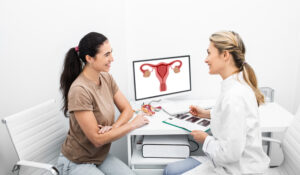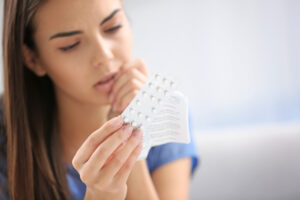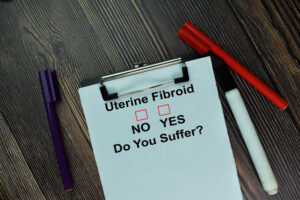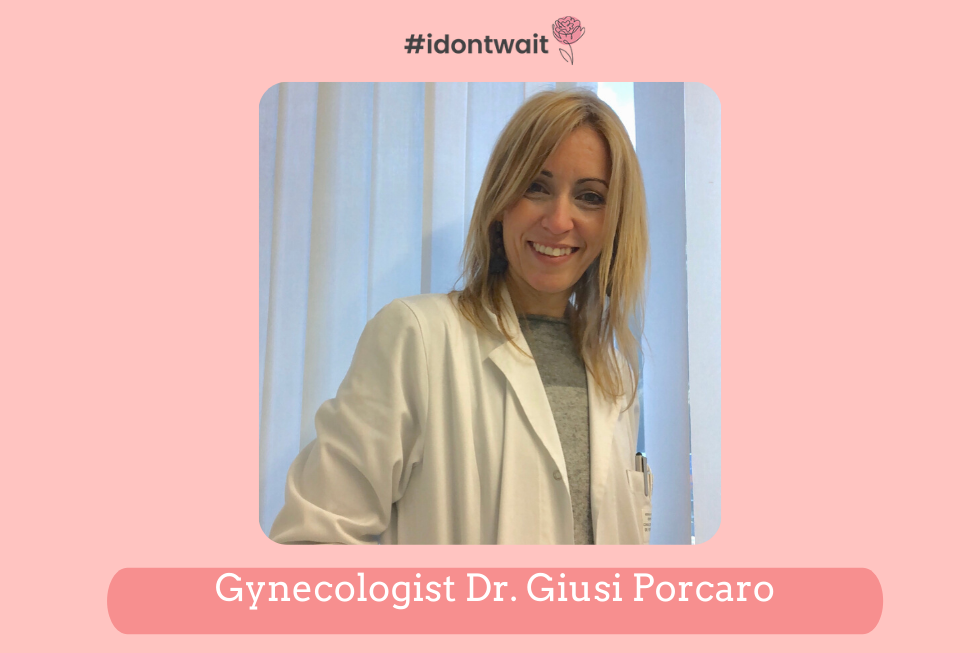How often should I see a gynaecologist? How often should I get a pelvic scan? Why? What are the benefits of regular visits?
All sexually active women should see a gynaecologist regularly, at least once a year, or whenever a gynaecological issue shows up. The purpose of the visit is to prevent any possible gynaecological disease and to treat asymptomatic pathologies that may be detected during a routine exam. Furthermore, it allows women to screen and get Pap smears and HPV tests done. It is always recommended to speak to a gynaecologist before starting sexual activity and receive all useful information for preventing unwanted pregnancies and for preventing sexually transmitted diseases. The pelvic scan can supplement the visit and it should be performed once a year or any time the patient experiences specific symptoms.

What is the normal physiology of the menstrual cycle? Does it rule out the possibility of getting pregnant?
Generally, the average duration of the menstrual cycle is 28 days, but the cycle may vary from woman to woman, ranging between 22 and 35 days. Typically, getting your menstrual cycle means you are not pregnant, but you should always consider whether the menstrual cycle is somewhat anomalous. Sometimes, you can experience unusual blood loss (it can come late, early, be very light, last little or be light but last longer than usual). These could be “fake periods”, which may actually temporarily conceal pregnancy.

Can the physiological menstrual cycle be considered on a par with the menstrual cycle that occurs when taking hormonal contraceptives? What are the differences?
Physiological menstruation is the result of the physiological growth of the endometrium and its subsequent shedding, caused by estrogen and progesterone, hormones generated by the ovaries of a fertile woman. It indicates that, from a physiological standpoint, the hypothalamus–hypophysis–ovaries axis is working correctly. Blood losses experienced by patients who take hormonal contraceptives (the correct term being withdrawal bleeding) are due to the pharmacological action on the endometrium of the hormones taken by the patient while the ovaries are resting. When the patient stops taking contraception, once a month, they experience blood loss.
Why don’t I get my menstrual cycle when I stop taking the pill?
When you stop taking hormonal contraceptives, it may take a few months for the menstrual cycle to return. It’s called post-pill amenorrhea. Roughly 30-50% of the patients who stop taking the pill experience it. Usually, the menstrual cycle returns naturally within a few months. However, it is always a good thing to seek advice with your gynaecologist, who will suggest the most suitable treatment. Sometimes, post-pill amenorrhea is a secondary effect, meaning it is linked to a specific cause, perhaps the same one that led the patient to choose hormonal treatment, and which often persists, despite the estroprogestinic therapy – suffice it to think of polycystic ovary syndrome (PCOS) or amenorrhea due to a hypocaloric diet.
Why does the continuous use of the contraceptive pill help relieve pain and mitigate other period-related symptoms?
In the presence of primary dysmenorrhea (not associated with genital pathologies) the use of estroprogestinic contraception can alleviate pain caused by the menstrual cycle. The action that stops the ovaries, the hormonal control of the organism and the consequent reduced endometrial proliferation – which means a lighter menstrual cycle – mitigate the cramps associated with menstruation. However, you should bear in mind that the pill doesn’t always help alleviate dysmenorrhea-related symptoms.
Why can the use of hormonal contraception help if I suffer from heavy bleeding? What is the name of this condition?
Taking the pill can help when it comes to menorrhagia, or heavy menstrual bleeding. Some specific progestinic treatments, associated with natural estrogen, reduce the proliferation of the endometrium hence reduce withdrawal bleeding, sometimes eliminating it completely. Using this type of contraceptive pill is extremely helpful, not only when dealing with menorrhagia, but with all the related symptoms several women suffer, such as anaemia, fatigue and social discomfort. In some cases, the pill may be taken continuously, without ever stopping it. Clearly, however, it must be approved and monitored by a gynaecologist.

Does continuously taking the pill help relieve period pain? How is this symptom called?
Dysmenorrhea is the medical term that indicates period pain. Continuously taking the pill can mitigate these symptoms.
Why are women fertile during the menstrual cycle too?
Because in women with a short menstrual cycle (less than 28 days), ovulation may occur in the very last days of the cycle, and since spermatozoa stay alive for 72 hours, an unprotected sexual intercourse can expose the woman to pregnancy. The same can happen to women with long menstrual cycles and consistent bleeding, whose last days of menstrual cycle can overlap the periovulatory phase.
Why do condoms prevent STDs, unliked other contraceptive methods?
Because the condom is the so-called “barrier method”, hence it prevents male and female genital secretions and biological fluids from coming into contact. That’s how we can prevent the transmission of venereal diseases.
When are vaginal discharges not a symptom of infection?
There are physiological discharges, such as leukorrhea gravidarum or cervical mucous during ovulation, which are not symptoms of an infection. The former clearly occurs during a very specific period of a woman’s life, while the latter generally occurs on a monthly basis, just before ovulation. These discharges are stringy, transparent and are basically odourless. As a general rule, it is safe to say that when discharges have no particular colour or smell, and when they are not associated with symptoms such as pain, or vaginal itching or burning, it is unlikely there is an infection underway.
Why does taking the pill alter my libido?
Because by stopping ovulation, the estrogenic hormonal peak normally reached in the periovulatory phase no longer occurs. The hormonal contraceptive generates a sort of hormonal levelling that can reduce your sex drive.
HPV (papilloma virus) infection: what can I do?
Unfortunately, condoms – which do prevent the transmission of STDs – don’t seem to protect from HPV infection. Therefore, prevention relies on your sexual habits and conduct, which means you should limit the number of partners and promiscuity. It is crucial to screen regularly, getting Pap smears and HPV tests.

Are there specific situations or vaccines that make the Pap smear unnecessary?
No, Pap smears and HPV testing are the only way to prevent cervical cancer. Even girls who have taken the HPV vaccine may contract an infection, because the HPV virus has far more oncogenic strains than the ones used in the vaccine.
Why do some women experience vaginal burning during sexual intercourse?
Very often this is due to vaginal inflammation or infection. Sometimes, however, it may be due to vaginal dryness and poor lubrication.
When and why do uterine fibroids cause infertility?
Uterine fibroids can cause infertility when they are not diagnosed and therefore not treated. That is why it is paramount to undergo regular gynaecological exams. In this way, if uterine fibroids are diagnosed, it will be possible to assess – based on the quantity, size and location of the fibroids themselves – whether or not the patient should undergo surgery to have them removed. Sometimes, when such a pathology is neglected, because the patient has failed to screen, the many fibroids, or their position (meaning where they are located in the uterine wall or if they develop towards the uterine cavity) may compromise the gestational sac or interfere with the regular evolution of pregnancy.

What treatments are available for fibroids, aside surgery?
Today, fibroids can be treated with the radiological embolization of the blood vessels that feed the fibroids, or with the High-Intensity Focused Ultrasounds (HIFU) technique, which uses heat to destroy the fibroid tissue. Aside from these solutions and surgery, fibroids may also be treated by taking specific supplements containing Vitamin D, Epigallocatechin Gallate and 1D-chiro-Inosito.
What herbs and vitamins can slow down the fibroid’s growth?
As previously mentioned, today we have supplements that allow us to keep in check and, in many cases, actually reduce the growth of uterine fibroids. These supplements contain Epigallocatechin Gallate, contained in green tea, Vitamin D and 1D-chiro-Inosito. These substances reduce the size of the fibroid by controlling and inhibiting its cellular growth, as well as the modulation of the expression of specific enzymes, such as aromatase.

What are the natural supplements that can reduce the size of uterine fibroids and how do they work?
Epigallocatechin Gallate is a green tea product and, together with Vitamin D, inhibits the cell division and replication that, along with an increase in cellular apoptosis mechanisms bring about a reduction in the growth of fibroid cells. 1D-chiro-Inosito, also contained in these supplements, reduces the size of uterine fibroids by modulating the aromatase enzyme, involved in the metabolism of estrogen, the hormone we know factors in the formation and growth of uterine fibroids.
Is hormonal therapy with the contraceptive pill more suited for reducing symptoms linked to fibroids or does it also reduce their growth?
Estroprogestinic therapy mainly aims to mitigate the symptoms associated with fibroids, especially menorrhagia, heavy bleeding, which is often linked to uterine fibroids. It therefore aims to treat related symptoms such as fatigue and anaemia but can also relieve pain. Plus, it sometimes helps reduce the growth of fibroids.

Recent Comments